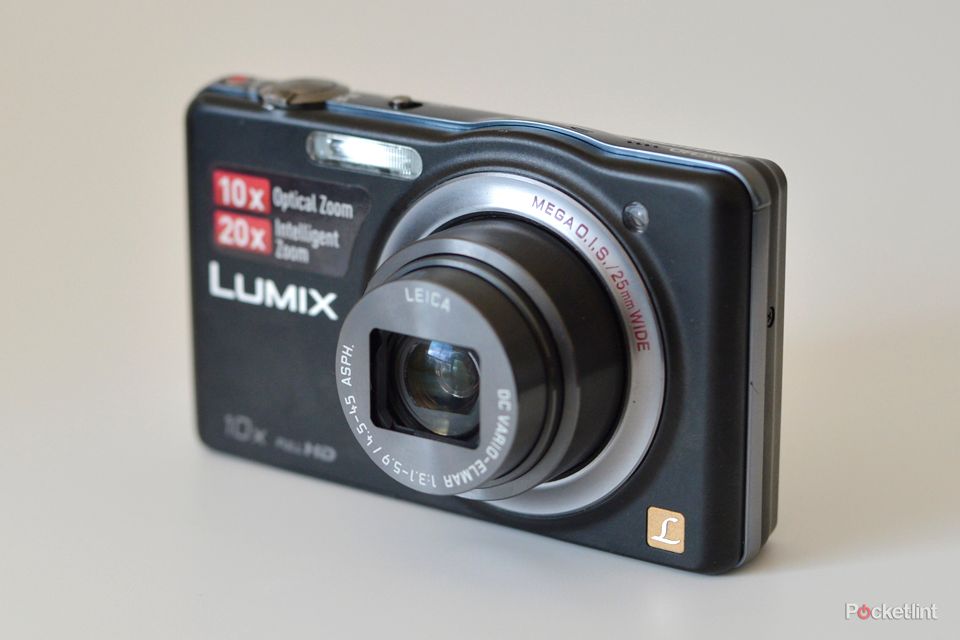The Panasonic Lumix SZ7 is the first in a new line of "stylish zoom" compacts. Its combination of a small body yet significant 10x optical zoom (25-250mm equivalent) lens sounds promising. Does the SZ7 balance up both style and substance?
Our quick take
The SZ7 delivers on its "stylish zoom" promise - it looks decent, takes good pictures for the most part and the sizeable 10x optical zoom is a credit to have in such a small body size.
However the poor LCD viewing angle and limited battery life are issues that can’t be ignored.
If you’re in the market for a point-and-shoot compact camera then there are plenty of highs to be had here. The SZ7 is an attractive and easy to use compact.

Panasonic Lumix DMC-SZ7 - 3.5 / 5
| FOR | AGAINST |
|---|---|
|
|
What’s new?
What separates the SZ7 from its similar Lumix FX and FS models is the inclusion of a 10x optical zoom lens. This describes the amount that the camera can zoom in. At its widest angle - 25mm equivalent - it’s possible to fit in a group shot easily when in a tight space. Flick the zoom toggle to extend the lens to its 250mm equivalent, however, and it’s possible to pick off subjects from further away and make them fill far more of the frame. It’s a broad zoom that’s ideal for all manner of shots, without adding distinct bulk to the camera’s body size.
The zoom is reasonably responsive, though not lightning fast to travel through its full range.

Close-focusing is limited to 50cm at the wide-angle end of the zoom, increasing to 1.5m at the top end. However, the macro, otherwise known as the "close-up" mode, will automatically activate when the camera is set to its intelligent auto (iA) mode. This makes it possible to focus just 50mm from the subject, though in our tests it was possible to get the end of the lens itself a little closer than this, at around 30mm from subject.
Point-and-shoot simplicity
If you’re in the market for a straightforward point-and-shoot compact camera then the SZ7 has plenty going for it. No complex manual modes to be found here. There are a host of scene modes, a panorama option, as well as auto modes. We found it best to leave the camera in intelligent auto (iA) as all the best possible settings are automatically activated depending on what the cameras "sees" - such as subject distance, scene type and so forth.

Autofocus is of a decent speed and there are plenty of focus area options to thumb through - 23 area auto, 1-area, spot, face detection, and AF tracking ensure every angle's covered. The camera dictates the focus point location, however, thus there are limits to precision control.
However the "0.1 sec Light Speed AF" as quoted on the Panasonic website just isn’t as nippy as the same-name focus system found in the likes of the Lumix GF3. The SZ7’s fast, but will often need to "think" for a brief moment before focus is found.
Svelte design
The SZ7’s design is small - indeed, at a shade over 2cm in width, it’s the perfect pocket companion. Available in black, brown or silver options, there should be a finish to suit most tastes.

But the small size means an equally slender - and low-power - battery. We’re unimpressed with its total life, which doesn’t last for many hours between charges. If this is a casual point-and-shoot camera then make sure it’s switched off in between snaps to get the most out of it.
Furthermore the 3-inch, 460k-dot LCD may sound decent on paper but it has a poor viewing angle in use. This means that when the screen isn’t facing direct to your line of sight it looks washed out, almost overexposed - even though firing off a shot won’t represent this.
Image Quality
The SZ7’s auto modes will auto-select the relevant ISO setting, opting for between ISO 100-3200 as standard, or ISO 1600-6400 if the high-sensitivity scene mode is selected.
If all this talk of "ISO" sounds like mumbo jumbo to you then don’t worry too much. A camera needs enough light to make a blur-free exposure, and one way this can be achieved is by amplifying the signal, ie, using a higher ISO sensitivity. However, the higher the ISO setting the lower quality the image will be on account of what’s known as image noise – white and/or multi-coloured flecks throughout an image.

In the case of the SZ7 the lower ISO shots are smooth and clear, though a little too "smooth" in some cases because of processing. For day-to-day snaps this is no problem at all, and the 14.3-megapixels of resolution is more than you’ll need for online use, A4 or even A3 prints.
Upwards of ISO 400 and shots take a sharp decline in quality, to the point where ISO 1600-3200 are of little use. For portraits in the dark and such like, however, the inclusion of the small built-in flash will permit use of lower ISO settings for the best possible shots.
Overall image quality is decent. Ideal for the audience it’s designed for, yet nothing to run home and shout about at the same time.
To recap
A good-looking, svelte compact with a sizeable 10x optical zoom lens and decent autofocus. While image quality is good, it’s the LCD’s shallow viewing-angle and the poor battery life that counteract some of the SZ7’s better points. This is a good point-and-shoot snapper but there are some shortcomings that can’t be ignored.
